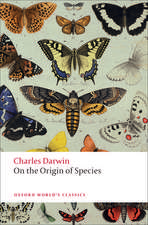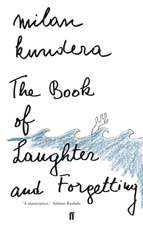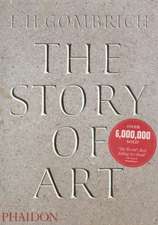The Call of the Wild: English Chinese Bilingual Edition
Autor Jack London Editat de Tom Thomasen Limba Engleză Paperback – 30 iun 2009
Preț: 41.17 lei
Nou
7.88€ • 8.09$ • 6.64£
Carte disponibilă
Livrare economică 06-20 februarie
Specificații
ISBN-10: 1448655145
Pagini: 84
Dimensiuni: 152 x 229 x 5 mm
Greutate: 0.14 kg
Editura: CreateSpace Independent Publishing Platform
Notă biografică
London wurde als uneheliches Kind einer Frau aus gutem Hause und eines unsteten Astrologen und Wanderpredigers geboren, der die Vaterschaft abstritt. Als seine Mutter den Geschäftsmann John London heiratete, nahm dieser ihn als seinen Sohn an.
Da der Stiefvater Invalide wurde, wuchs London in ärmlichen Verhältnissen auf und musste schon in seiner Kindheit Geld verdienen. Mit 14 brach er die Schule ab und lief weg. Er begann ein Leben als Landstreicher, Abenteurer und Matrose. 1895 absolvierte er nachträglich seinen Abschluss auf der High School und besuchte dann die Universität von Berkeley. Sein Studium beendete er nicht.
1897 brach London stattdessen zum großen Goldrausch nach Klondike auf - jedoch erfolglos. Zurück in Kalifornien gelang ihm der Durchbruch als Schriftsteller, und er heiratete seine erste Frau, mit der er zwei Kinder bekam. Schon nach vier Jahren folgte die Scheidung und London brach mit seiner Yacht zu Abenteuerreisen nach Hawaii und Australien auf. 1905 heiratete er erneut und führte bis zu seinem Tod eine glückliche Ehe. 1910 zog das Paar auf eine Ranch, die London als sein eigentliches Lebenswerk betrachtete. Seine letzten Jahre waren allerdings geprägt von Depressionen und Alkoholkonsum.
London verfasste ab 1900 hunderte von Romanen, Kurzgeschichten und Reportagen, die auch Vorlage für zahlreiche Verfilmungen wurden. Darunter die Welterfolge "The Call of the Wild", "The Sea-Wolf" und "White Fang". Sein Hauptthema: die Spannung zwischen Natur und Kultur.
Jack London starb im Alter von 40 Jahren am 22. November 1916 auf seiner Ranch an akutem Nierenversagen, doch auch über Selbstmord wird bis heute spekuliert.
Cuprins
INTRODUCTION
BÂTARD
THE CALL OF THE WILD1. Into the Primitive
2. The Law of Club and Fang
3. The Dominant Primordial Beast
4. Who Has Won to Mastership
5. The Toil of Trace and Trail
6. For the Love of a Man
7. The Sounding of the Call
BIOGRAPHICAL BACKGROUND
HISTORICAL BACKGROUND
LITERARY ALLUSIONS AND NOTES
CRITICAL EXCERPTS
SUGGESTIONS FOR FURTHER READING
Descriere
Buck, a loving and docile St. Bernard mix becomes forcibly changed when he is nabbed from his home in sunny California and sold into service as an Alaskan sled dog.
Forced to endure the harsh climate of the Yukon backcountry, Buck becomes progressively more savage in an effort to stay alive among the other dogs in the pack. Relying on primal instincts, Buck emerges as an intimidating and fearless leader in the wild.
Jack London's most famous tale is a stark reminder of how important it is to trust one's instincts. Though examined through the eyes of a dog, The Call of The Wild is a tale far greater than that of a life lived on four paws. London's intention is clear: When faced with dire and inhumane conditions, there is nothing left to do but revert to a wild state fight to stay alive.
With a new note about the author, and a cleanly typeset manuscript, this edition of London's poignant tale resonates just as profoundly as when it was originally published in 1903. A new film adaptation of this novel starring Harrison Ford and Omar Sy released in 2020.
Textul de pe ultima copertă
A best-seller from its first publication in 1903, The Call of the Wild tells the story of Buck, a big mongrel dog who is shipped from his comfortable life in California to Alaska, where he must adapt to the harsh life of a sled dog during the Klondike Gold Rush. The narrative recounts Buck’s brutal obedience training, his struggle to meet the demands of human masters, and his rise to the position of lead sled dog as a result of his superior physical and mental qualities. Finally, Buck is free to respond to the “call” of the wilderness. Over a hundred years after its publication, Jack London’s “dog story” retains the enduring appeal of a classic.
This Broadview Edition includes a critical introduction that explores London’s life and legacy and the complex scientific and psychological ideas drawn upon by London in writing the story. The appendices include material on the Klondike, Darwin’s writings on dogs, other contemporary writings on instinct and atavism, and maps of the regions in which the story takes place.
























